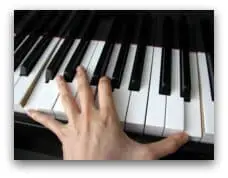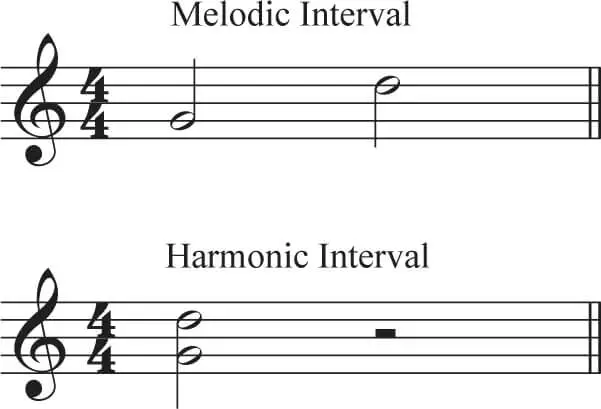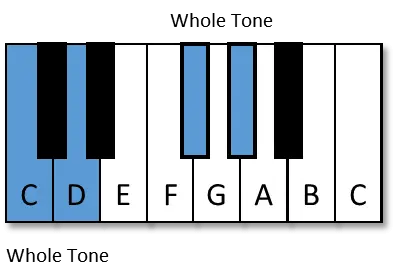- Home
- Basic Piano Theory
- Musical Intervals
Musical Intervals Explained
This article may contain compensated links. Please read the disclosure for more info.
What is an interval? Musical intervals are the distances between notes. They are the skips and leaps in a melody, create the pattern of a scale, and building blocks for chords.
The names of musical intervals are used to describe the distance in pitch between two notes or simply how wide the space is from one musical note to the next.
It could be debated, but these distances are where single notes turn into music!
Why Learn About Musical Intervals?

Learning about intervals will help you understand many concepts in music theory much better.
Learning to identify music intervals visually and aurally and sing or play intervals on your instrument will also improve your note reading skills.
For interval ear training, try this resource: Mastering Intervals
How to Identify Intervals
Melodic and Harmonic Intervals
There are two ways to write or play an interval:

- One is called a melodic interval. Each note is played/written at a time successively, like in a melody.
- The other way is when the two notes are played/written simultaneously, creating harmony, called a harmonic interval.
The Smallest Intervals
Half Step or Semitone

The smallest interval commonly used today in the music of the western hemisphere is the half step or the semitone.
On a piano, it's easy to see the distance from one key to the very next.
This is also called an interval of a minor (=small) Second.
Whole Step or Whole Tone

As with the semitone (above), the whole tone (or whole step) is one small but significant interval and one of the common scales' building blocks.
This is also called an interval of a major (=big) second.
Interval Number Names
Basic Intervals
What are the 8 intervals in music?
Basic intervals are numbered from unison (= one or prime interval), increasing step by step to an octave (= eight).
You simply count a starting note as “1” and then count each staff line and space to the following note.
Interval number names are:
1 = Unison/ Prime, 2 = Second, 3 = Third, 4=Fourth, 5=Fifth, 6 = Sixth, 7 = Seventh, 8 = Octave.
 Harmonic Intervals Chart
Harmonic Intervals ChartCompound Intervals
Compound intervals are musical intervals larger than an octave; 9th, 10th, 11th, 12th and 13th.
Musical Interval Qualities
What are the 5 types of intervals?
Intervals are named after their number (as you saw above) but also what is called quality.
The qualities explain precisely how large or small each interval is.
Quality names are:
- Major
- Minor
- Perfect
- Augmented
- Diminished
So, each basic interval (if found on the white keys on the piano or using no sharps or flats) may have different qualities:
- A unison and octave can only be perfect.
- Fourths and fifths may be either perfect, diminished, or augmented.
- Seconds, thirds, sixths, and sevenths may be major or minor.
By using accidentals (sharps and flats), the intervals can also be changed to become even larger or smaller! Read more about the 5 types of intervals here.
Ear Training Intervals
It is an excellent idea to practice listening to and differentiating the different intervals in music examples.
This is especially useful when you want to write down a melody you hear or to be able to imagine how a song sounds only by reading the notes.
- Start by learning how a scale sounds in step-wise movement (seconds).
- Then continue to practice how skipping a note sounds (thirds).
- Then practice each basic interval separately, both melodic and harmonic, and try to associate each interval with a specific sound color or a specific song. Try this excellent free interval song chart generator.
Singing the intervals (even if it sounds terrible!) also helps your listening or inner hearing, so sing along! :)





